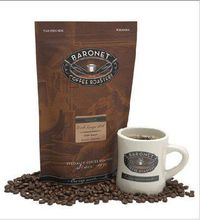Boutique coffee Colombian coffee raw bean specification Colombian coffee practice
Colombia Coffee (Cafe de Colombia) is produced in Colombia and is one of the few single-origin coffees sold in the world under its name. In terms of quality, it has earned accolades that no other coffee can match. Colombia is more concerned with product development and production promotion than other producing countries. It is this, coupled with its superior geographical and climatic conditions, that makes Colombia coffee delicious and famous all over the world. Roasted coffee beans will release a sweet aroma, with acid in the sweet, bitter in the good quality characteristics, because of the appropriate concentration, often used in high-grade coffee blends. Colombia coffee exudes a light and elegant aroma, not as strong as Brazilian coffee, not as sour as African coffee, but a sweet light aroma, low-key and elegant.
Chinese Name Colombia Coffee Foreign Name Colombian Coffee The main ingredient of Emerald Coffee is Arabica coffee beans, Robusta coffee, washed coffee beans (Washedbeans) whether it contains preservatives No main edible effect can prevent radiation damage, has health care function suitable for people generally healthy people can drink, suffering from cardiovascular diseases, stomach problems, elderly women, pregnant women, vitamin B1 deficiency and cancer patients should try not to drink coffee Storage method cool dry place
directory
1 Historical origin
2 Species form
3 Growing environment
4 Quality of origin
5 Variety grades
6 Unique Flavors
7 Export management
8 Coffee culture
Historical source editor
Colombia coffee brands
Colombia coffee brands (9 photos)
The history of coffee cultivation in Colombia can be traced back to the Spanish colonial era in the sixteenth century. There are also many sayings about the history of coffee in Colombia:
One: it is said to have come from Haiti in the Caribbean via El Salvador in Central America.
Second, coffee beans were first introduced into Colombia in 1808 by a priest from the French Antilles via Venezuela. One of them is that the first coffee seeds from Colombia came from Venezuela through the province of Santander. [1]
Third: The earliest record of coffee cultivation in Colombia appears in a book entitled "The Illustrated Orinoca" by the Spanish missionary Jose Gumilla. He describes his travels on both sides of the Meta River in 1730, mentioning coffee plantations there. By 1787, other missionaries had spread coffee to other parts of Colombia.
Colombia, located in the northwest of South America, is a beautiful country with a long history. Indians have lived on this land since ancient times. It became a Spanish colony in 1531 AD and gained independence in 1819. It was renamed in 1886 to commemorate Columbus, the discoverer of the American continent. Colombia, beautiful mountains, beautiful scenery, pleasant climate, four seasons such as spring, fresh air. Colombia is rich in products, especially coffee, flowers, gold and emeralds known as the "four treasures." Today the country is the second largest coffee producer after Brazil, the world's largest exporter of Arabica coffee beans and the world's largest exporter of washed coffee beans. Often described as having a silky texture, Colombia coffee has the best balance of all coffees. It tastes soft, silky, and ready to drink, and it has earned a reputation that no other coffee can match: "green gold."
Species morphology editor
Colombia coffee plant morphology
Colombia coffee plant morphology (10 photos)
Colombia coffee varieties are mainly small coffee. Plants are small trees or large shrubs, 5-8 meters high, usually multi-branched at the base; old branches are gray, nodes expand, young branches glabrous, compressed. Leaves thinly leathery, ovate-lanceolate or lanceolate, 6-14 cm long, 3.5-5 cm wide, apex long acuminate, acuminate 10-15 mm long, base cuneate or slightly obtuse, rarely rounded, entire or shallowly undulate, glabrous on both surfaces, with or without pits in axils of lower veins; midvein raised on both surfaces of leaf blade, lateral veins 7-13 on each side; petiole 8-15 mm long; Stipules broadly triangular, born at the top of the young branches conical long pointed or awned tip, born at the top of the old branches are often pointed, long 3-6 mm. Cymes several clustered in leaf axils, each inflorescence 2-5 flowers, without pedicel or with very short pedicel; flowers aromatic, pedicels 0.5-1 mm long; bracts more or less united at base, dimorphic, 2 broadly triangular, nearly equal in length and width, 2 lanceolate, 2 times as wide, foliaceous; calyx tubular, 2.5-3 mm long, calyx limb truncated or 5 denticulate; Corolla white, length varies with species, generally 10-18 mm long, apically often 5-lobed, rarely 4-or 6-lobed, lobes often longer than corolla tube, apically often obtuse; anthers protruding outside corolla tube, 6-8 mm long; styles 12-14 mm long, stigmas 2-lobed, 3-4 mm long. Berry broadly elliptic when ripe, red, 12-16 mm long, 10-12 mm in diam., exocarp dural, mesocarp fleshy, sweet; seeds raised abaxially, ventral plane, longitudinally grooved, 8-10 mm long, 5-7 mm in diam. The flowers bloom from March to April. [2]
Growing environment editor
Colombia's favourable climate provides coffee with a true "natural pasture". Coffee trees in Colombia are mainly cultivated in the Andes mountains, on steep slopes up to 1,300 meters above sea level, where the annual temperature is about 18 degrees Celsius, the annual rainfall is 2000 to 3000 mm, the north latitude is 1 °-11 ° 15, the west longitude is 72 ° -78 °, and the specific altitude range can exceed 2.000 meters. By a particular combination of various factors, latitude, altitude, soil, plant origin of species and variety of coffee making in coffee growing areas of Colombia, climate in coffee growing areas and rain patterns resulting from dual paths of tropical convergence, changing topography throughout the day, luminosity, favorable temperature ranges throughout the year, distribution of moderate and rainwater, and some common cultural practices including selective harvesting and transformation processes, including washing and drying. Very suitable for coffee growth, mild climate, humid air, and can be harvested regardless of season. That's why Colombia coffee is so good. Colombia has three Cordillera mountains running north-south, right into the Andes. Coffee is grown along the highlands of these mountains. The terraces provide a diverse climate, with harvest seasons throughout the year and different types of coffee maturing at different times. And fortunately, unlike Brazil, Colombia doesn't have to worry about frost damage. There are approximately 2.7 billion recorded coffee trees in Colombia, 66 per cent of which are grown on modern plantations and the rest on small traditionally managed farms. [3]
The pure taste of Colombia coffee comes from the natural environment of Colombia, which has the most favorable conditions for coffee growth. But beyond that, it is inseparable from the hard work of local growers. In Colombia, coffee is cultivated on 1.07 million hectares, there are about 302,000 coffee plantations in the country, and 30 to 40 per cent of the rural population depends directly on coffee production. Although Colombia has many farms, they are not large. Each farm has an area of only about 2 hectares, and more than 80% of coffee plantations have only about 5000 coffee trees, with an average of 3000. Thus, agriculture in Colombia is of the small farm type. Locals plant tall trees or banana trees around coffee trees. During the seedling stage, coffee trees are sheltered to ensure a cool and humid environment for coffee growth. Due to the high humidity in the coffee forest, the small temperature difference, the slow maturity of coffee beans, which is conducive to the accumulation of caffeine and aromatic substances, the coffee quality is the best.

Important Notice :
前街咖啡 FrontStreet Coffee has moved to new addredd:
FrontStreet Coffee Address: 315,Donghua East Road,GuangZhou
Tel:020 38364473
- Prev

Fine coffee Colombian coffee bean characteristics Colombian coffee bean price
Colombian coffee (Cafe de Colombia), which originated in Colombia, is one of the few individual coffees sold in the world under the name of the country. In terms of quality, it has won praise unmatched by other coffee. Compared with other producing countries, Colombia is more concerned with developing products and promoting production. It is this, coupled with its superior geographical and climatic conditions, that makes Goran
- Next

Boutique Coffee Colombia Coffee Manor Colombia Coffee Origin
Colombia Coffee (Cafe de Colombia) is produced in Colombia and is one of the few single-origin coffees sold in the world under its name. In terms of quality, it has earned accolades that no other coffee can match. Colombia is more concerned with product development and production promotion than other producing countries. It is this, coupled with its superior geographical and climatic conditions, that makes Columbus
Related
- Does Rose Summer choose Blue, Green or Red? Detailed explanation of Rose Summer Coffee plots and Classification in Panamanian Jade Manor
- What is the difference between the origin, producing area, processing plant, cooperative and manor of coffee beans?
- How fine does the espresso powder fit? how to grind the espresso?
- Sca coffee roasting degree color card coffee roasting degree 8 roasting color values what do you mean?
- The practice of lattes: how to make lattes at home
- Introduction to Indonesian Fine Coffee beans-- Java Coffee producing area of Indonesian Arabica Coffee
- How much will the flavor of light and medium roasted rose summer be expressed? What baking level is rose summer suitable for?
- Introduction to the characteristics of washing, sun-drying or wet-planing coffee commonly used in Mantenin, Indonesia
- Price characteristics of Arabica Coffee Bean Starbucks introduction to Manning Coffee Bean Taste producing area Variety Manor
- What is the authentic Yega flavor? What are the flavor characteristics of the really excellent Yejasuffi coffee beans?

